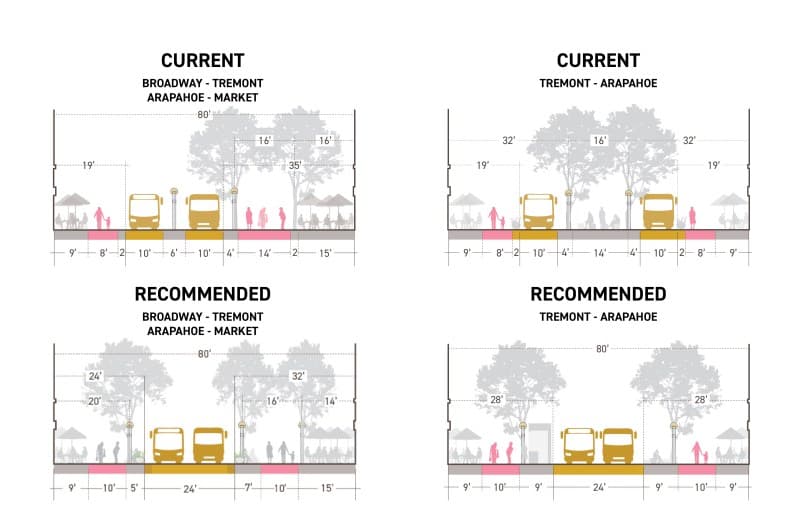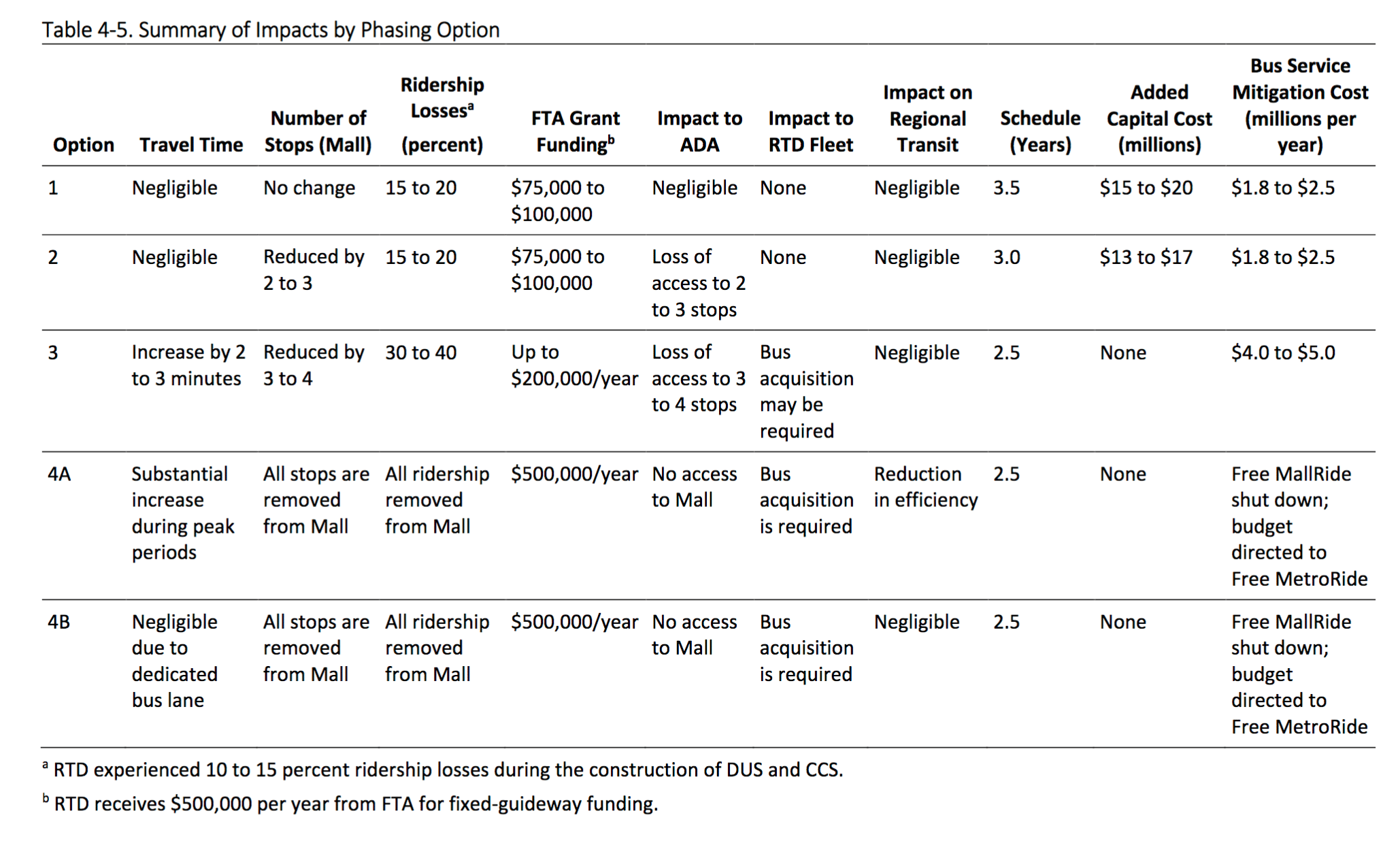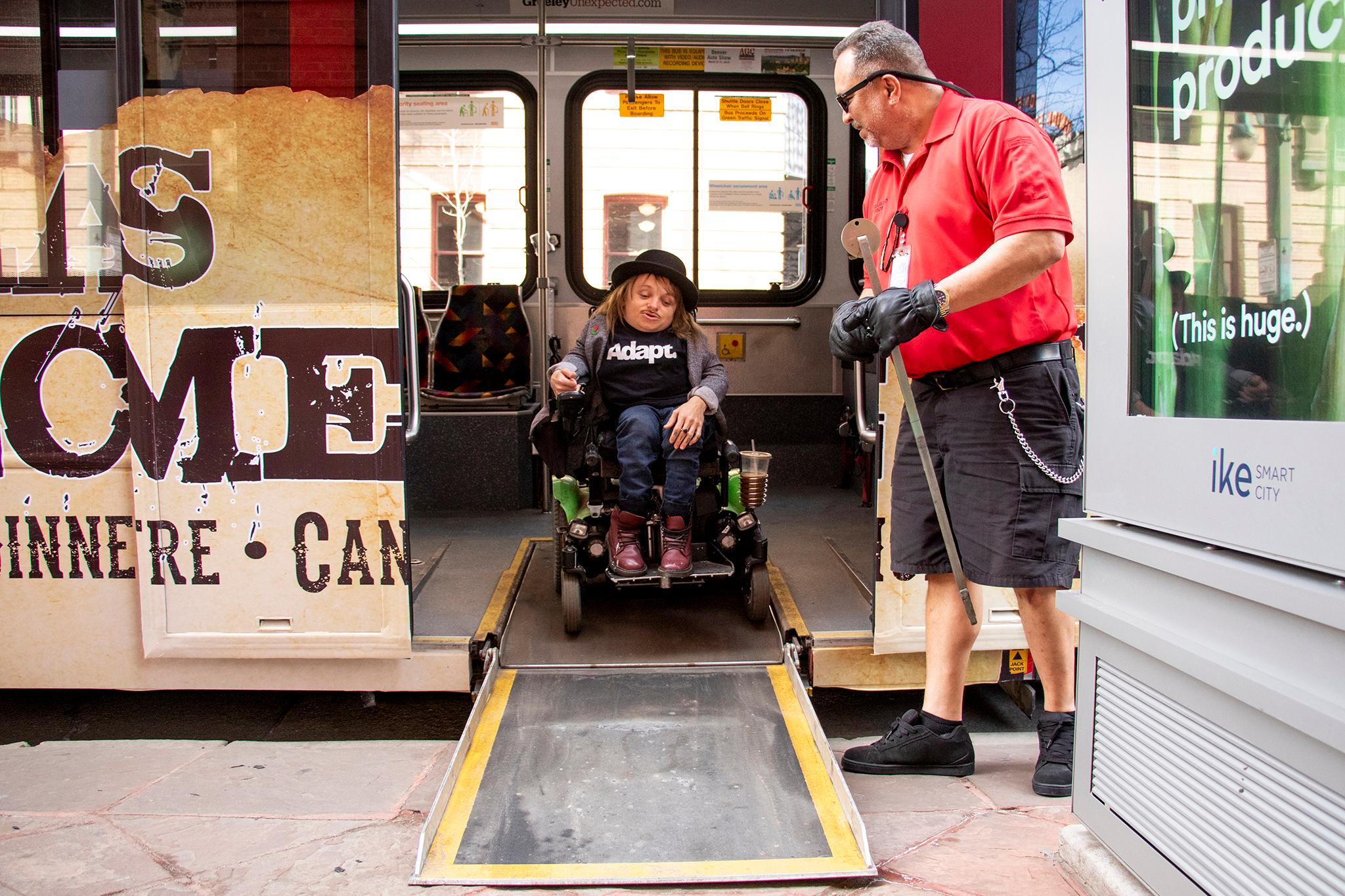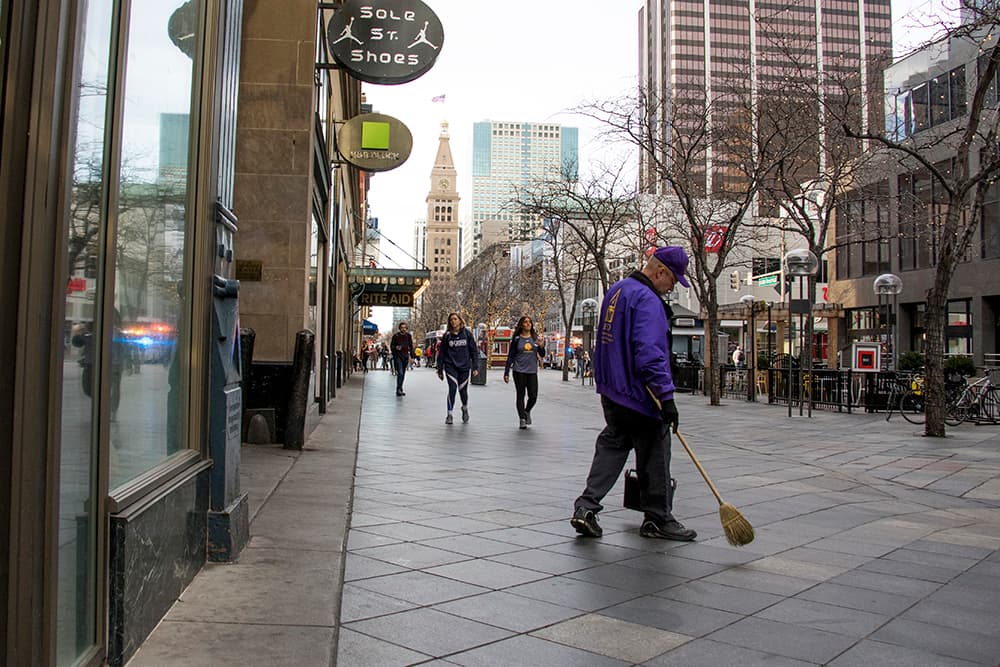We've known for more than a year that the sidewalks and transitway on the 16th Street Mall as we know them today cannot last. Denver's growing too fast for that -- about 78,000 more people in the next five years -- which is why the city and the Regional Transportation District are spiking the median, widening the sidewalks and squishing the bus lanes into the middle of the strip.
And besides, the mall was designed to last just 30 years. It technically reached the end of its life in 2012, according to a new analysis released by the city and the Regional Transportation District. It costs $1 million a year to maintain.
The federally required document describes how reconstruction might proceed -- and how the MallRide, mall businesses and mall people might be disrupted en route to mall places.

Construction could begin, in earnest, as early as 2020, Denver Public Works project manager Brian Pinkerton estimates. It will take between two-and-a-half and four years to complete.
Here, have some more things to know.
The new design will put the "pedestrian" in pedestrian mall.
It's weird that everyone calls 16th Street a pedestrian mall, because it moves so many people on buses -- 39,000 people a day. A given block averages between about 1,500 and 2,500 people walking per hour on weekdays and peaks at about 4,100 between Welton Street and Glenarm Place, over-stuffing the sidewalk.
The new design widens sidewalks to 10 feet on each side to hold more residents and tourists. The cluttered, thin median will be removed and buses will cruise up and down the center.
There's a tiny chance the entire MallRide route closes down during construction, but it's unlikely.
Don't worry, nearby Moe's Broadway Bagel fans! The environmental assessment is essential but nonetheless bureaucratic, meaning government types have to cover their bases by including an entire spectrum of construction options. The two most extreme options include shutting the mall bus down altogether, which would save time and money but would wound businesses and reroute riders.
Ridership will fall no matter what. Buses on 15th, 17th, 18th and 19th streets would ferry typical MallRide passengers between upper and lower downtown.
These are technically the possibilities for construction:

RTD prefers options one, two or three. "I think it would be very unlikely that anyone would agree to shut it down completely," Pinkerton said.
Businesses will likely take a hit -- at first.
About 370 businesses fall within the project limits, which include 15th and 17th streets. They could see a temporary decline in sales of between 20 and 40 percent during construction because of disruptions to sidewalk life, according to the assessment. The city will maintain "reasonable" access to shops and restaurants, it states, by following city guidelines for pedestrian access.
A big reason for the makeover is to make the mall "stickier." One study found that just 1 percent of people on 16th "linger" on the weekdays. Three percent linger on the weekends.
The future will be brighter for business -- that's the idea, anyway.
People with disabilities may have a harder time during construction.
About 39,000 people use the MallRide daily, and about 10 percent of them have disabilities or medical conditions that make driving impossible. So 3,900 riders see the MallRide as a lifeline, and construction could marginalize them, according to the report.

The assessment says transportation management plans and detours would mitigate disruptions for people with disabilities. But detours, fewer bus stops and other transit changes will disproportionately affect that crowd.
The mall will lose its tree canopy until it is replaced.
Denver planted 83 red oak trees when the mall opened. Only seven are still alive. The new plan "would remove the existing trees and replace them with a variety of tree species that fit within the context of the design and thrive in Colorado's climate," according to the assessment.
What's next:
The public can comment on the environmental assessment through May 14. Then the feds have to approve it, following revisions. After that, the city will hire a firm to design and build the project, which will break ground in 2020 at the earliest.














